Photographer revisits the 1970s and 1860s in one day at Sherbrooke Village
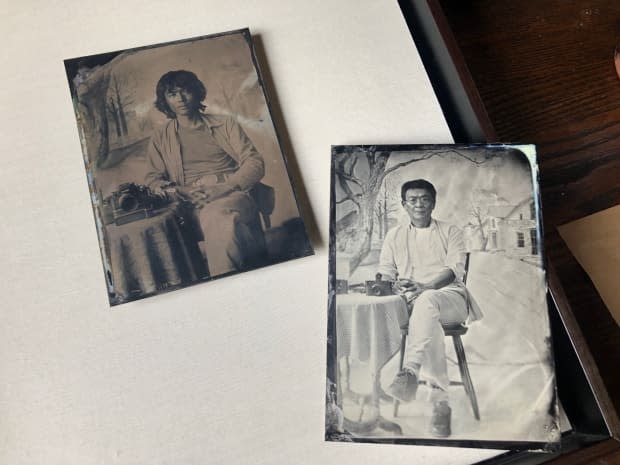
A well-known Japanese-Canadian photographer travelled back in time last month to revisit his first encounter with an antiquated photography process he's come to love.
Shin Sugino immigrated to Canada at 19 and earned a degree in photography from Ryerson University.
A few years after graduating, the National Film Board of Canada sent him out on assignment.
"It was a very loose assignment," Sugino said. "Just go across the country and take the photographs of the impressions of this country."
That was the summer of 1976, and during his rambles, he stumbled across an old-fashioned tintype parlour at Sherbrooke Village in Nova Scotia and had his photo taken. Sugino held on to the portrait, captured on a thin sheet of metal, but over the years, he forgot where it was taken.
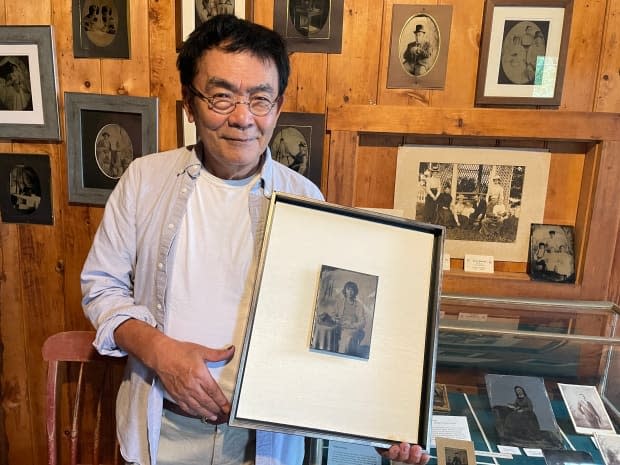
Rediscovering the image in a shoebox almost 30 years later, Sugino was inspired to teach himself how to make his own tintype images. He posted the portrait on the bio section of his website, noting it had been taken by an "unknown photographer."
By chance, his Halifax-based photo chemical supplier, Dale Wilson, recognized the backdrop.
"Dale told me, 'No, I know this guy who took this picture. I know the studio, I know the background,'" said Sugino. "I was amazed."
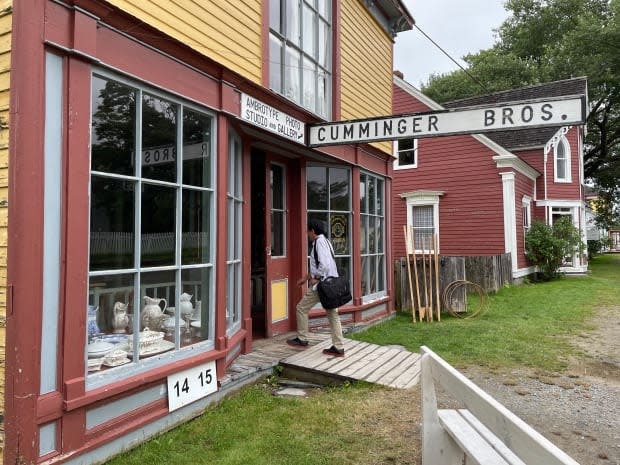
With the mystery of the portrait's origins solved, Sugino wasted no time.
He booked a flight to Halifax from Toronto within the week and drove up the Eastern Shore back to Sherbrooke Village, a living museum with 25 heritage buildings and costumed interpreters that depict life in the 1800s.
Wilson brought the museum on board and coaxed the original photographer and chemist out of retirement to recreate the 1976 portrait, 1867-style.
"How often can you have that kind of opportunity?" said Sugino. "Forty-five years apart, and you take the photograph in the exact same situation, exact same technique, same background?
"I had to do it."
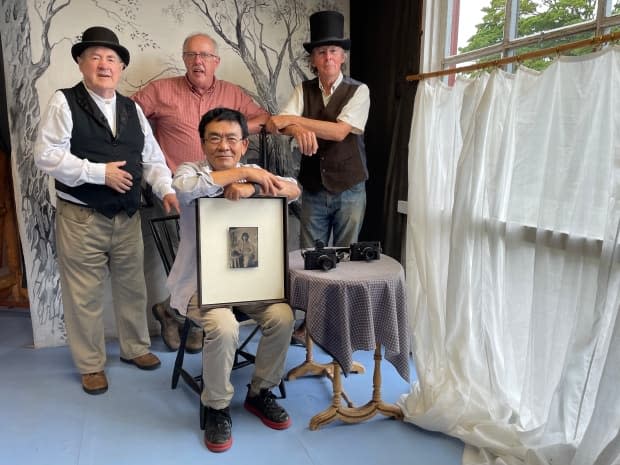
Peter Murphy — the father of the CBC reporter who wrote this story — and his friend Archie MacLellan had just started the tintype parlour in the summer of 1976. The studio above the general store in Sherbrooke Village is itself a recreation of the original tintype parlour it housed in 1867.
The studio uses the same antique processes and the same chemicals to take old-style photographs of visitors in period costumes.
Relatively cheap and quick to produce, tintypes and their sister process, ambrotypes, were the Polaroids of the 1860s. Within minutes, a photographer can create a single finished image either on metal (tintype) or glass (ambrotype) — collectively known as wet-plate collodion photography.
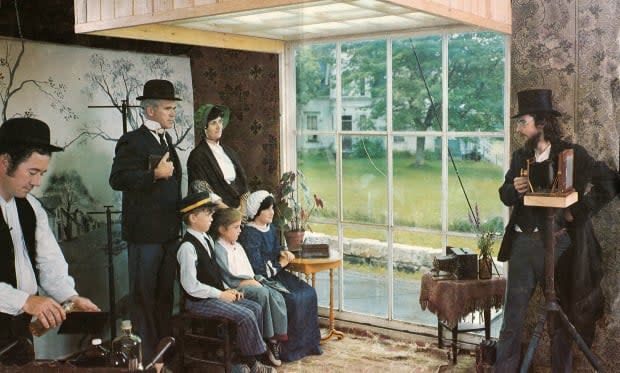
"I think we spent the first summer just working on the chemistry," said MacLellan. "The chemistry is fairly complicated."
In the last decade or so, there's been a bit of a tintype revival happening across North America. In the 70s, however, the process was not very well known.
"We were the only ones in Canada doing the actual process," said Murphy.
Wilson became fascinated by tintypes and ambrotypes and their history about eight years ago. He said the studio at Sherbrooke Village is an outlier; he has yet to find a longer running, continuously operating, commercial wet-plate collodion photography studio in Canada.
"I don't think they have any idea what they started here and what it's evolved to and the longevity of it and the importance of it within the bigger picture of the revival of collodion work in Canada," Wilson said.
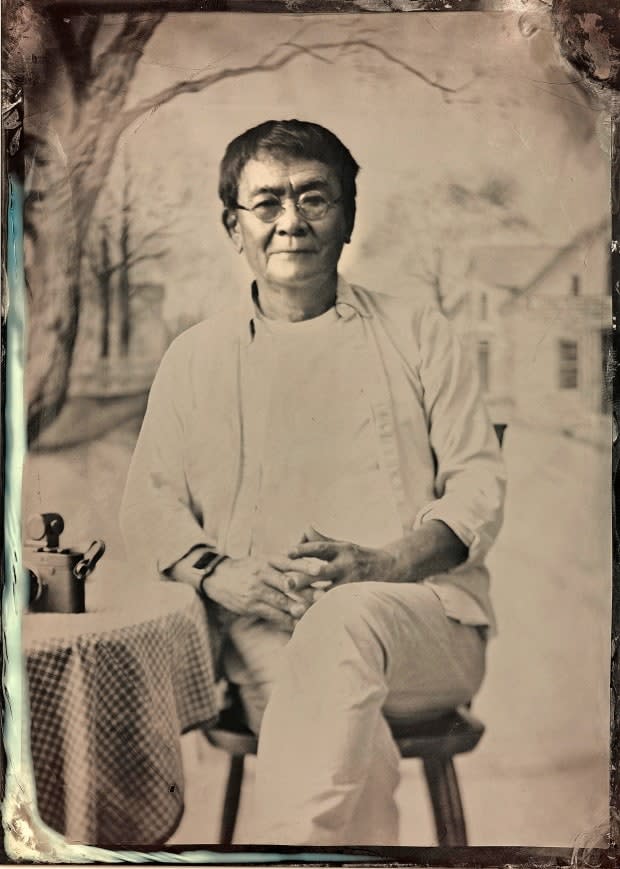
Tintype photography is a particularly sensitive and mutable art form. The photographer has to develop a feel for the conditions, such as light and humidity, as well as the way the silver nitrate and collodion will react, and adjust the process accordingly.
"It does have a special feel different to all other forms of photography," Murphy said.
The resulting images tend to have a recognizable look — shallow depth, blackened, uneven edges and patchy exposure.
For many photographers involved in the revival, including Sugino, it's exactly the tangible, temperamental nature of tintype photos and the contrast with the digital realm that they love.
"It kind of puts me back to where I started my photography," Sugino said. "That first time in the darkroom, you know, your image comes up in the tray. And then it's a magic."
Sugino plans to display the two Sherbrooke Village portraits side by side in his upcoming international photography exhibition opening in March in Tokyo.
MORE TOP STORIES

